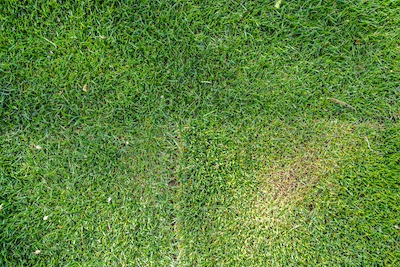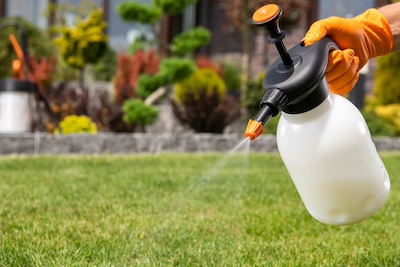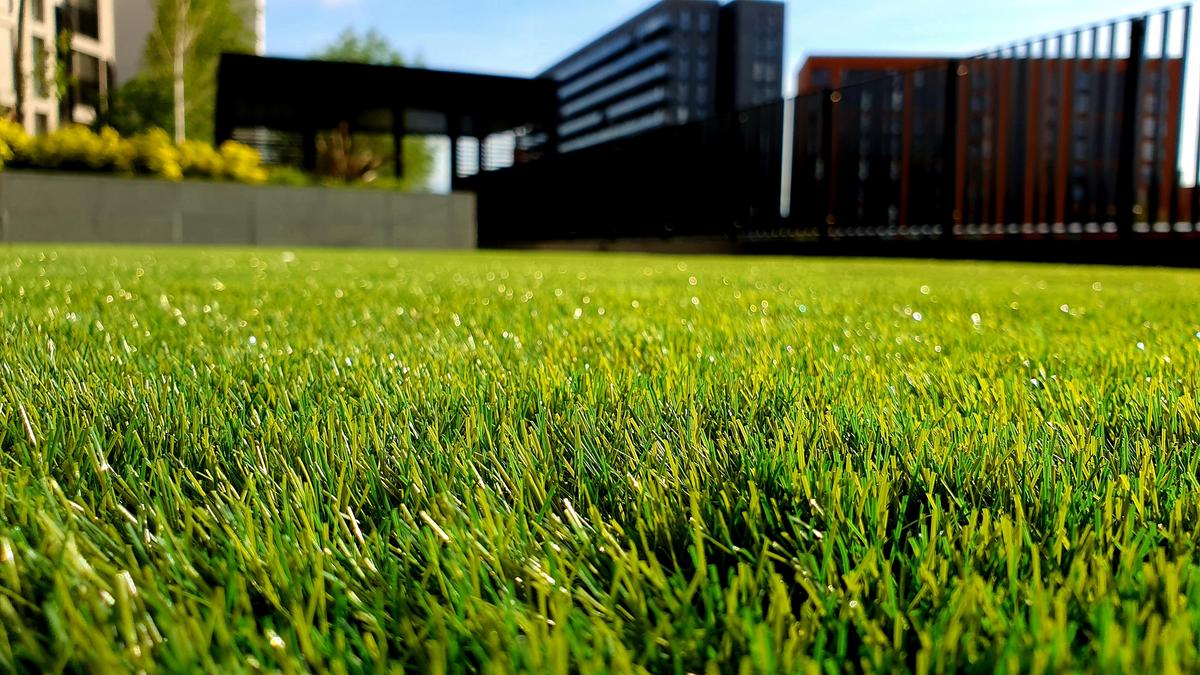How to Prevent Lawn Disease
Grasping the nuances of lawn care, particularly in the battle against fungal lawn disease, requires a clear understanding of various environmental and maintenance factors. This discussion aims to shed light on effective strategies that can significantly enhance the health and appearance of your lawn.
Understanding Lawn Disease Causes
Heat and humidity significantly promote lawn fungus growth. High temperatures and moisture create a perfect breeding ground for these pathogens. Your lawn absorbs moisture, but when coupled with high heat, it hampers the grass’s ability to resist fungal diseases.
Excessive moisture is another major instigator. Overwatering or long bouts of rainy weather can trap moisture on grass blades and soil, creating an ideal setting for fungi to thrive. Frequent and abundant rainfall often leaves your lawn wet for prolonged periods, worsening the situation.
Poor drainage exacerbates moisture issues. If water routinely pools in certain areas of your lawn after watering or rain, it indicates inadequate drainage—an invitation for fungus. This ongoing issue can convert your vibrant lawn into a breeding ground for disease unless properly managed.
Some grasses are more vulnerable to fungal infections than others. Bluegrass and rye, for instance, are more frequently affected, especially if subjected to unfavorable conditions. Awareness of how different grass species respond to wet and humid environments helps target preventive care effectively.
Environmental stress can contribute to outbreaks. If your grass is stressed due to inadequate nourishment, extreme temperatures, or physical damage, it’s less equipped to fight fungal invaders. Keeping your lawn robust through balanced fertilization and careful physical upkeep is key in preventing potential fungus issues from taking root and spreading across your lawn.
Recognizing these factors – heat, humidity, excessive moisture, poor drainage, vulnerable grass species, and environmental stress—serves as your first line of defense. Approaching lawn care with this understanding shapes your tactics in preventing and handling fungi efficiently and maintaining the health of your turf.

Implementing Effective Watering Practices
Watering your lawn effectively plays a crucial role in preventing conditions that foster fungus growth. The best time for this essential task is during the early morning hours.
Early morning watering offers numerous advantages. Cooler temperatures and calm winds allow the water to soak deeply into the soil, reaching the roots rather than evaporating. This deeper irrigation encourages grass to develop extended root systems, making them more resilient against external stresses.
Morning watering ensures grass blades are dry before nightfall. Nighttime tends to be cooler and less windy, meaning moisture can linger longer on blades if not dried properly.
When your lawn remains wet overnight, it becomes a breeding ground for fungal diseases. Providing enough time for your greenery to dry out during the day diminishes the risk of such pathogens taking hold.
For effective watering, follow these tips:
- Use a sprinkler system that evenly distributes water across your lawn. Each part of your grass should receive enough hydration without areas receiving too much or too little.
- Aim to give your lawn about an inch of water per week, which can come from rainfall or manual watering. Consider investing in a rain sensor to prevent over-watering.
- Be consistent with watering schedules, but also efficient. Utilize technology like soil moisture sensors to ensure you are watering only when necessary.
By employing optimal lawn watering strategies, you create a balanced environment that sustains healthy grass while preventing fungal diseases.

Choosing and Applying Fungicides to Prevent Lawn Disease
Choosing the right fungicide and applying it correctly is crucial to keep your lawn healthy and disease-free. Here, we will guide you through the selection of fungicides and outline their effective application as preventative measures.
Selecting the Right Fungicide
Start by identifying the specific type of fungus or disease affecting your lawn. Various fungicides target specific pathogens; misidentification can lead to ineffective treatments.
For instance, products containing chlorothalonil are excellent for broad-spectrum fungus control, whereas myclobutanil might be preferred for targeting specific fungal diseases like brown patch or powdery mildew.
Consider the active ingredients and their classifications. Fungicides are often grouped by their mode of action, which can help prevent resistance development. Rotate use between different groups if you’re treating persistent problems or applying treatments preventatively.
Application Timing and Frequency
The timing of fungicide application is just as critical as the type of fungicide chosen. For many lawn diseases, applying a fungicide before the disease takes hold is optimal.
This preventative approach means watching the weather closely; high humidity and warm temperatures often signal an impending fungal outbreak. The application should precede these conditions to prevent fungus establishment.
The frequency of application depends on the product used and the severity of the fungal pressure. Most labels suggest reapplying the fungicide every 14 to 28 days during the active growing season, depending on environmental conditions and product specifications. Following label directions ensures effectiveness and compliance with safety standards.
Effective Application Techniques
To effectively apply fungicide, ensure your equipment is properly calibrated and the fungicide is evenly distributed across the lawn. Whether using a granular spreader or a liquid sprayer, uniform application prevents missed spots where fungus could survive and continue to spread.
Focus on the application rate. Over-application can damage your lawn and surrounding ecosystems, while insufficient application may not adequately control the disease. Thoroughly read and adhere to the product’s label; this step is essential for safety and effectiveness.
Once you have treated your lawn with fungicide, continue monitoring the health of your turf. Notice improvements and watch for signs of recurrent issues. With careful attention to selection, application timing, and technique, you can significantly reduce troublesome fungal diseases and foster a thriving lawn.
Protecting your lawn with fungicides involves deliberate choices and precision in execution. With these insights, you’re equipped to make informed decisions that lead to effective disease management and a lush, green landscape.

Maintaining a Lawn Free of Lawn Disease
Maintaining a healthy lawn involves recognizing and managing key factors such as moisture levels, watering practices, and appropriate fungicide use. By focusing on these aspects diligently, you can prevent fungal diseases from taking hold and ensure your lawn remains vibrant and resilient.
- Kerns JP, Soika MD, Tredway LP. Preventive control of Pythium root dysfunction in creeping bentgrass putting greens and sensitivity to fungicide active ingredients. Plant Dis. 2009;93(12):1275-1280.
- Latin R. A Practical Guide to Turfgrass Fungicides. American Phytopathological Society; 2011.
- Smiley RW, Dernoeden PH, Clarke BB. Compendium of Turfgrass Diseases. 3rd ed. American Phytopathological Society; 2005.

